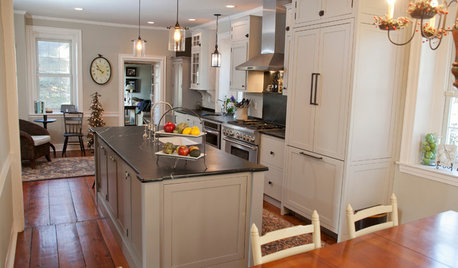Mixing my own tomato seed starting mix.
kevinitis
12 years ago
Related Stories

GARDENING GUIDESSeeds or Seedlings? How to Get Your Garden Started
Growing delicious herbs and vegetables starts with knowing your goals and when you want to plant
Full Story
FARM YOUR YARD6 Things to Know Before You Start Growing Your Own Food
It takes time and practice, but growing edibles in the suburbs or city is possible with smart prep and patience
Full Story
GARDENING AND LANDSCAPINGCitrus 101: Start Your Own Backyard Orchard
This Earth Day Weekend, Add Some Green, Style and Deliciousness to Your Landscape
Full Story
GARDENING GUIDESVegetables and Flowers Mix in Beautiful Edible Gardens
Ornamentals, meet your edible garden mates. We know you'll get along just beautifully
Full Story
EDIBLE GARDENSSummer Crops: How to Grow Tomatoes
Plant tomato seedlings in spring for one of the best tastes of summer, fresh from your backyard
Full Story
KITCHEN DESIGNNew and Old Mix It Up in a Historic Farmhouse Kitchen
A couple rethink the kitchen in their Pennsylvania farmhouse to restore authenticity while also creating a space for modern living
Full Story
GARDENING GUIDESHow to Plant a New Lawn From Seed
Choose from more grass varieties and save money over sod by starting your lawn from seed
Full Story
DECORATING GUIDESRelax and Enjoy an Extreme Style Mix
Start With What You Have, Add What You Love, and the Result Can Be Beautiful
Full Story
COLOR10 Reasons to Make a Splash With Tomato Red
You won’t duck at these tomatoes. See how bold red shades can play up architecture, light up a dark spot and add drama
Full StoryMore Discussions







suncitylinda
foose4string
Related Professionals
Kyle Landscape Architects & Landscape Designers · Prairie Ridge Landscape Architects & Landscape Designers · Mount Wilson Landscape Architects & Landscape Designers · Deerfield Beach Landscape Contractors · La Mirada Landscape Contractors · Los Banos Landscape Contractors · Galena Park General Contractors · Arlington General Contractors · De Pere General Contractors · Hagerstown General Contractors · Park Forest General Contractors · Phenix City General Contractors · Summit General Contractors · Haddonfield Decks, Patios & Outdoor Enclosures · Miami Decks, Patios & Outdoor Enclosuresterrybull
kevinitisOriginal Author
susan2010
Ohiofem 6a/5b Southwest Ohio
kevinitisOriginal Author
jjgrands1
rockguy
suburbangreen
kevinitisOriginal Author
DWD2
kevinitisOriginal Author